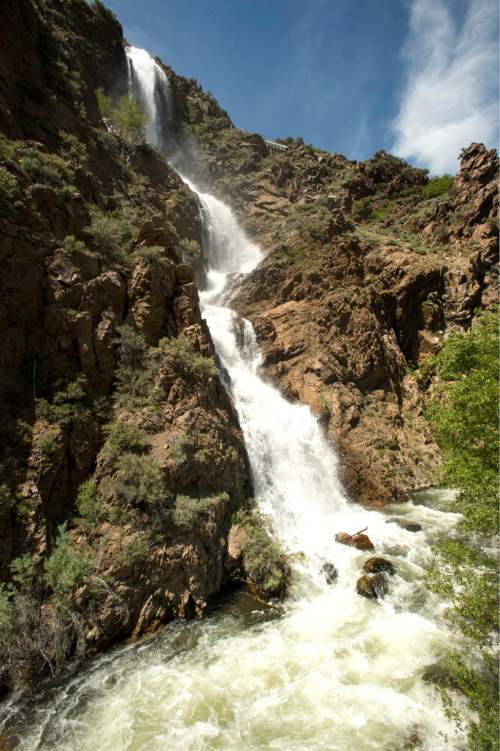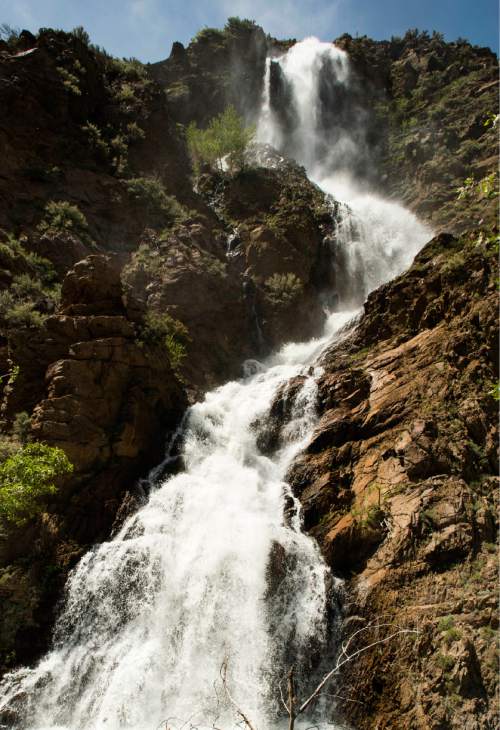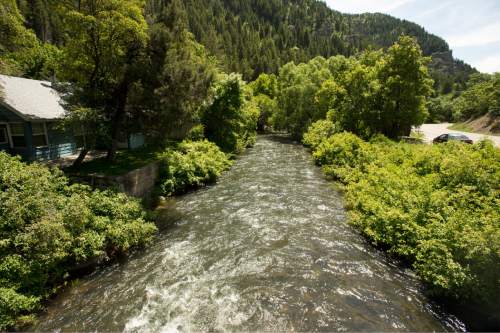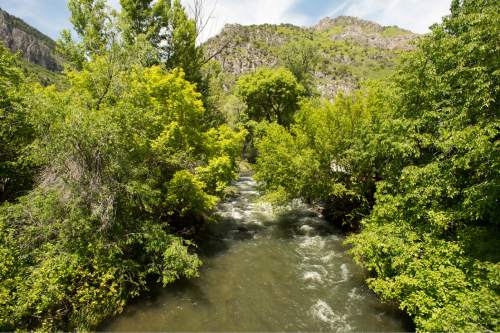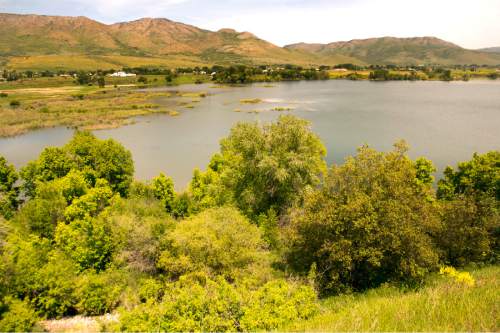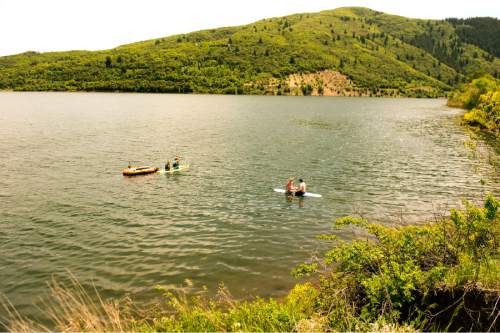This is an archived article that was published on sltrib.com in 2016, and information in the article may be outdated. It is provided only for personal research purposes and may not be reprinted.
Did last month's cool, wet weather finally mark the end of Utah's yearslong drought? It depends on how you interpret the data — and how you define a drought.
The U.S. Drought Monitor has ended all drought designations in the state, as Utah has finally accumulated statewide water totals that are considered normal for this point in the water year, according to the monthly Utah Climate and Water Report from the Natural Resources Conservation Service.
When hydrologists talk about "drought," they're generally talking about precipitation levels — not people's access to water. And some local experts are less than convinced that it's time to play the death knell for this latest drought.
Much of the precipitation that made up the difference over the past few months came in the form of rain. That may help Utah's water totals, but it doesn't necessarily fill the state's reservoirs, which are built to capture snowmelt and runoff, not rainfall. Statewide, reservoirs are averaging 64 percent of capacity, 1 percent less than last year.
Consequently, experts say, there are still some farmers and irrigation users who may run short on water this summer.
"You can take a look at the drought from a lot of perspectives," said Randy Julander, Utah Snow Survey supervisor for the Natural Resources Conservation Service (NRCS), "but if you're the guy who doesn't have any water, that's still a drought condition."
Despite the potential for shortages, Julander said he finds himself "in a very optimistic kind of mood" when looking at the improvement from last year and the potential for that trend to continue.
At this time last year, the U.S. Drought Monitor reported that about 90 percent of the state was experiencing some degree of drought conditions. And though the Salt Lake and Utah valleys continue to remain among the driest in the state, even that water basin was within range of what is considered normal as of June 1, according to the NRCS report.
Brian McInerney, a hydrologist for the National Weather Service office in Salt Lake City, was less willing to see the reservoir as half full.
"It's how you look at the data, how you twist it around," he said. "We got some pretty good rain in May, similar to last year, but overall we're still not getting the spring runoff that we need."
McInerney worried that the past three or so years of warm, short winters followed by rainy springs points to a disturbing trend predicted in scientific literature.
Current thought on global warming, McInerney said, is that as the atmosphere warms, Utah will see more rain and less snow.
Research expects that parts of the Western U.S. where the ground is usually 90-100 percent covered in snow during the winter will see almost half as much snow by the year 2035, McInerney said. And right now, he said, Utah appears to be warming two to three times faster than the rest of the world.
Having more snow and less rain isn't inherently a problem, but Utah's water systems are designed to work in tandem with the current climate.
"The system we have now works wonderfully because when we don't really need the water, we store it in the mountains" as snow, McInerney said.
Shifting to more rain and less snow could render the system incapable of providing enough water to support Utah's future population, he said, because rain tends to be less predictable. Without an effective means of collecting and storing it for later use, runoff from rain seeps rapidly into the soil and is taken up by plants.
But Julander said papers with which he was familiar say drawing conclusions about any such trend may be premature. Lower elevations will probably see less snow and more rain than they have in the past, he said, but the bulk of Utah's water comes from elevations above 8,000 feet.
"And there," he said, "we see just as much snow as we ever have."
At those higher elevations, Julander said, the longest-ranging evidence suggests these past years' water shortage is part of a natural fluctuation.
"We see droughts like these come and go," he said, "and we see high flows come and go."
But Julander said he, too, believes Utah will probably get drier in the long term. Tree rings, for example, indicate that over the past 100 years, Utah and much of the Western U.S. has been wetter than normal. The next few decades, he said, are supposed to be pretty much status quo for the region.
That may mean less precipitation than the area's human residents — relative newcomers to the scene — are accustomed to.
epenrod@sltrib.com
Twitter: @EmaPen



